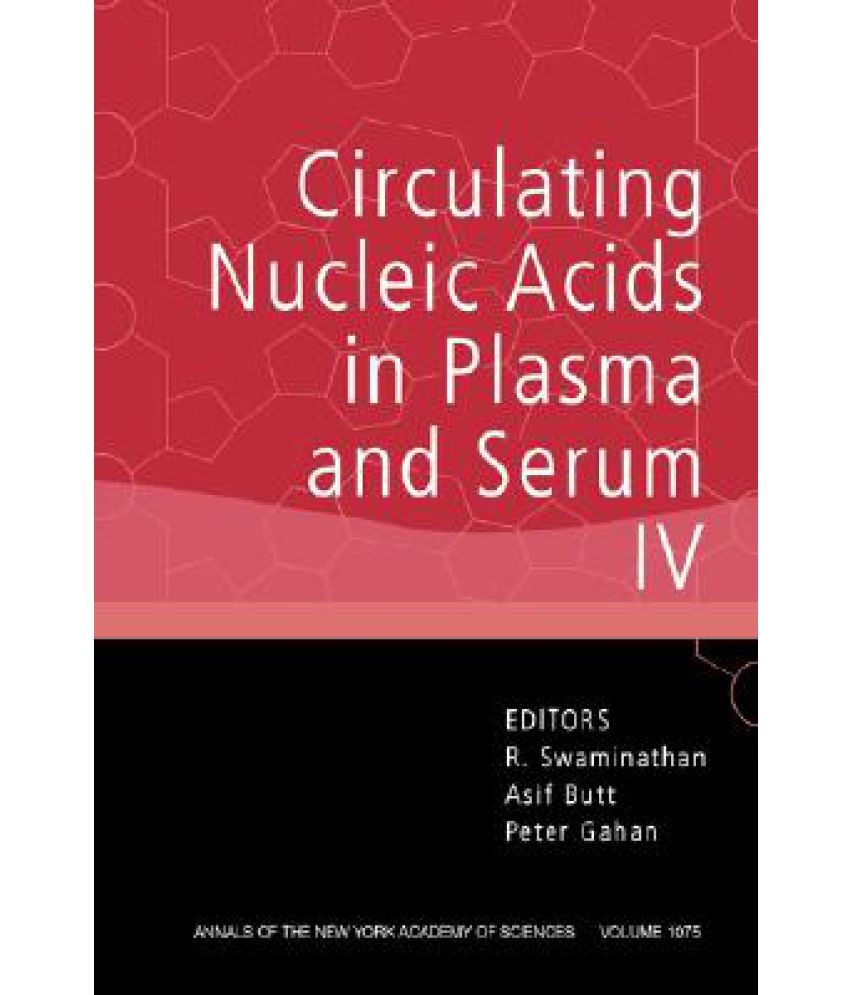Something went wrong. Please refresh the page and try again.
Something went wrong. Please refresh the page and try again.
Notifications can be turned off anytime from settings.
Item(s) Added To cart
Qty.
Something went wrong. Please refresh the page and try again.
Something went wrong. Please refresh the page and try again.
Exchange offer not applicable. New product price is lower than exchange product price
Please check the updated No Cost EMI details on the payment page
Exchange offer is not applicable with this product
Exchange Offer cannot be clubbed with Bajaj Finserv for this product
Product price & seller has been updated as per Bajaj Finserv EMI option
Please apply exchange offer again
Your item has been added to Shortlist.
View AllYour Item has been added to Shopping List
View AllSorry! Circulating Nucleic Acids in Plasma and Serum IV is sold out.


You will be notified when this product will be in stock
| ||||||||||||||
Learn More about the Book
An accurate, inexpensive, and noninvasive method for the early diagnosis of cancer has been something of a holy grail among cancer researchers, but until recently a method meeting all three criteria has been elusive. Nucleic acids were first discovered in circulation in 1948, but it was not until the 1960s and 70s that patients with autoimmune disease and cancer were discovered to have higher levels of circulating DNA than were detected in in healthy persons.
The focus in this volume is on three major applications of the circulating nucleic acids detection method: cancer, fetal medicine, and diseases such as diabetes, stroke, and myocardial infarction. In addition, there are reports on the biology and origins of circulating DNA and RNA and on improved methods for the detection of nucleic acids in plasma and serum.
The circulating DNA found in cancer patients has many characteristics in common with their tumors, which made it an attractive candidate for use in the diagnosis and management of patients with malignancies. This method can also be applied to the assessment of the sublinical tumor burden in cancer patients, thus reducing the risk of unnecessary chemotherapy.
Detection of nucleic acids circulating in maternal serum means that fetal diagnosis may be possible without resorting to the more dangerous and invasive methods now used (e.g., amniotic fluid and chorionic villus sampling). Detection of problems in the pregnancy such as preeclampsia and intrauterine growth retardation may also become possible through maternal blood samples.
In diabetic patients, circulating nucleic acids can be used for the early detection of developments such as retinopathy.
The benefits of using circulating nucleic acids in the diagnosis and management of cancer and chronic disease will be realized through earlier detection by means of this less expensive and less invasive testing technique and through its potential for closer monitoring of the disease.
NOTE: Annals volumes are available for sale as individual books or as a journal. For information on institutional journal subscriptions, please visit www.blackwellpublishing.com/nyas.
ACADEMY MEMBERS: Please contact the New York Academy of Sciences directly to place your order (www.nyas.org). Members of the New York Academy of Science receive full-text access to the Annals online and discounts on print volumes. Please visit https: //www.nyas.org/MemberCenter/Join.aspx for more information about becoming a member
On the Back Cover
An accurate, inexpensive, and noninvasive method for the early diagnosis of cancer has been something of a holy grail among cancer researchers, but until recently a method meeting all three criteria has been elusive. Nucleic acids were first discovered in circulation in 1948, but it was not until the 1960s and 70s that patients with autoimmune disease and cancer were discovered to have higher levels of circulating DNA than were detected in in healthy persons.
The focus in this volume is on three major applications of the circulating nucleic acids detection method: cancer, fetal medicine, and diseases such as diabetes, stroke, and myocardial infarction. In addition, there are reports on the biology and origins of circulating DNA and RNA and on improved methods for the detection of nucleic acids in plasma and serum.
The circulating DNA found in cancer patients has many characteristics in common with their tumors, which made it an attractive candidate for use in the diagnosis and management of patients with malignancies. This method can also be applied to the assessment of the sublinical tumor burden in cancer patients, thus reducing the risk of unnecessary chemotherapy.
Detection of nucleic acids circulating in maternal serum means that fetal diagnosis may be possible without resorting to the more dangerous and invasive methods now used (e.g., amniotic fluid and chorionic villus sampling). Detection of problems in the pregnancy such as preeclampsia and intrauterine growth retardation may also become possible through maternal blood samples.
In diabetic patients, circulating nucleic acids can be used for the early detection of developments such as retinopathy.
The benefits of using circulating nucleic acids in the diagnosis and management of cancer and chronic disease will be realized through earlier detection by means of this less expensive and less invasive testing technique and through its potential for closer monitoring of the disease.
NOTE: Annals volumes are available for sale as individual books or as a journal. For information on institutional journal subscriptions, please visit www.blackwellpublishing.com/nyas.
ACADEMY MEMBERS: Please contact the New York Academy of Sciences directly to place your order (www.nyas.org). Members of the New York Academy of Science receive full-text access to the Annals online and discounts on print volumes. Please visit www.nyas.org/membership/main.asp for more information about becoming a member.
The images represent actual product though color of the image and product may slightly differ.
Register now to get updates on promotions and
coupons. Or Download App